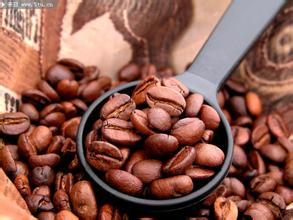Coffee bean picking process, growth process, year flavor description, taste, variety origin.
Coffee bean picking process, growth process, year flavor description, taste, variety origin.
Selective picking, that is, walking between trees several times at intervals of 8-10 days and picking only those ripe red berries, higher quality coffee beans are used.
Advantages: the picked coffee fruit is uniform in size, similar in maturity and free of other impurities, which is beneficial to post-processing.
Disadvantages: high cost
There are two ways to prepare coffee beans for the baking process. The method chosen has a significant impact on the final value and quality of coffee. The cheapest method of processing is called "drying", which is used for lower-grade coffee beans, while higher-quality coffee beans are processed by "wet treatment". Drying is used for unwashed coffee beans. Wet treatment is used for thoroughly washed or semi-washed coffee beans. Except for the more common use of drying in Brazil and Ethiopia, most Arabica coffee beans are processed by wet treatment. Some robastian coffee beans are also processed by wet treatment.
Drying is also known as sun-drying or non-washing: the drying method is relatively simple. First of all, spread the freshly picked fruit on the exposure field for a week or two until the fruit crackles and dries naturally. After that, the dried pulp, endocarp and silver peel are removed by a sheller.
Advantages: the fruity aroma of coffee beans can be well preserved and the price is low.
Disadvantages: coffee beans may be contaminated with the fishy smell of the ground, and the quality of coffee beans is uneven.
Fresh fruit-sun-dried-remove all pericarp, seed coat-coffee raw beans
Note: this method is mostly used for lower-grade coffee beans and is still widely used in Brazil, Ethiopia, Congo, Indonesia, Yemen and other places.
The washing method is also called wet treatment: after the outer pulp of the coffee fruit is removed by the pulp separator within 12 hours after the coffee is picked, the coffee beans are soaked in a large cement tank filled with water to separate the fruit. The coffee beans are then pasted in the fermentation box for about 12-36 hours, containing 15% water after fermentation, and the fermented coffee beans are washed clean with clean water. The coffee beans are dried in a dryer or dried in the sun, and the coffee beans are called "parchment coffee beans", waiting for export.
Fresh fruit-soak soft-remove exocarp-ferment the coffee fruit with pulp in the fermentation tank-rinse the pulp gum with water-dry the coffee fruit with endocarp-remove the endocarp with a peeling machine-polish the seed coat-coffee raw beans

Important Notice :
前街咖啡 FrontStreet Coffee has moved to new addredd:
FrontStreet Coffee Address: 315,Donghua East Road,GuangZhou
Tel:020 38364473
- Prev

Flavor description of Colombian early spring coffee beans introduction to the taste of grinding scale varieties
The flavor description of Colombian early spring coffee beans grinding scale varieties taste introduction the world coffee is divided into two series, one is Brazil as the representative of hard coffee, strong flavor, and the other is Colombia as the representative of soft coffee, its flavor is light. The difference lies in the altitude of the producing area and the method of planting. Coffee is planted extensively in hilly red soil in Brazil and in mountain black in Colombia.
- Next

Why coffee beans are better at higher altitude
Why the higher the altitude, the better the coffee beans the best quality coffee beans are usually strong and grow at an altitude of more than 4500 meters. The growth of these coffee beans is very slow, so the density of the beans is very high, and the gap in the middle of the beans should be curved. In contrast, coffee beans grown at low elevations usually have a lower density and slightly open gaps in the middle. As for the color of the bean, coffee
Related
- Guji coffee producing area of Guji, Ethiopia: Humbela, Shakiso, Wulaga
- What is the most expensive variety of Qiloso in BOP multi-variety group?
- How to store the coffee beans bought home?
- Why are Yemeni coffee beans so rare now?
- Ethiopian Sidamo all Red Fruit Sun Sun Santa Vini Coffee beans
- SOE is mostly sour? What does it mean? Is it a single bean? what's the difference between it and Italian blending?
- Is Italian coffee beans suitable for making hand-brewed coffee?
- How to choose coffee beans when making cold coffee? What kind of coffee beans are suitable for making cold coffee?
- Just entered the pit to make coffee, what kind of coffee beans should be chosen?
- Can only Japan buy real Blue Mountain Coffee? What are authentic Jamaican Blue Mountain coffee beans?

